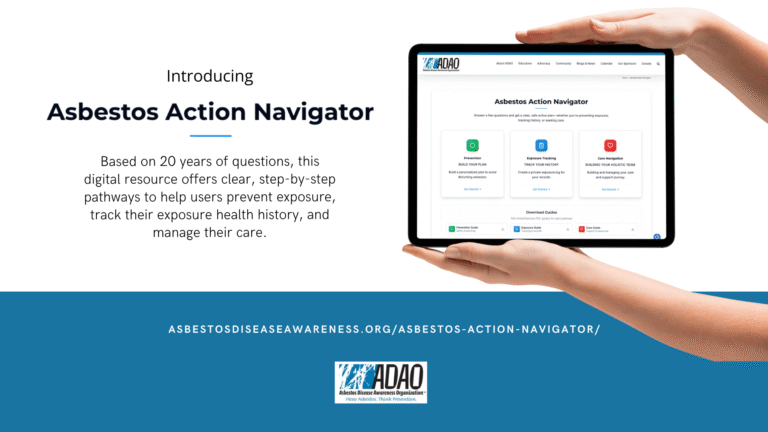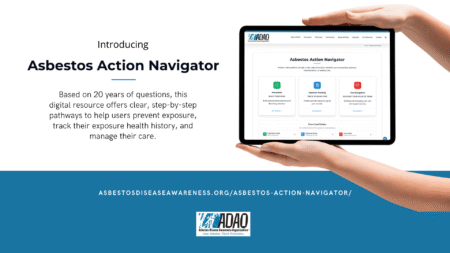ADAO’s New Website for the LA Wildfires, Toxic Debris and Air, and Asbestos Risks
Posted January 16, 2025

Update:
LA residents who lost their homes are now being told that it is safe to return. However, there is reason to believe that additional safety measures still need to be taken to ensure your safety when returning to previous evacuation zones. For more information, please read the following LA Times article. It is still recommended that you wear, at minimum, an N95 mask when returning to the site of the fires. We also have more tips for preventing exposure during these dire times on our LA Wildfires Website.
ADAO’s New Website for the LA Wildfires, Toxic Debris and Air, and Asbestos Risks
Wildfires in Los Angeles not only devastated homes and landscapes but also compromised air quality and public health. Burning buildings, vehicles, and household items release harmful toxins—including asbestos, arsenic, and lead—into the air and surrounding debris. Staying informed and taking appropriate precautions are essential to protect yourself, your family, and your community during and after wildfires. As such, we’ve created a new website dedicated to mitigating the asbestos risks of the LA fires.
The Hidden Danger: Toxic Debris and Air
When older structures burn, materials like asbestos can degrade, releasing microscopic fibers into the air. Asbestos is a known carcinogen, and inhaling its fibers can cause severe health problems, including mesothelioma, lung cancer, and asbestosis. These airborne toxins also contaminate the environment, creating long-term risks in communities.
Understanding Asbestos Risks
Asbestos is a well-documented human carcinogen. During a fire, asbestos fibers can become airborne, increasing the risk of exposure. Once the fire is extinguished, debris piles may continue to release these fibers into the air if disturbed. Exposure to asbestos can result in deadly diseases, including:
- Mesothelioma – a rare, aggressive cancer
- Lung Cancer
- Asbestosis – a chronic lung condition
- Other serious respiratory illnesses and cancers
Symptoms of asbestos-related diseases may take years to appear, making awareness and prevention critically important, so read on to learn the best practices.
4 Ways to Prevent Asbestos Exposure After Wildfires
- Follow Government Guidelines:
-
- Comply with evacuation orders and official safety mandates.
- Ensure cleanup efforts adhere to local and federal guidelines.
- Reduce Your Chances of Exposure:
- Use N95 masks, gloves, and disposable clothing during cleanup.
- Avoid direct contact with ash and debris.
- Monitor Air Quality:
- Track air quality using tools like AirNow.gov.
- Stay indoors during poor air conditions and use air purifiers to minimize exposure.
- Utilize Professional Help:
- Hire only licensed asbestos professionals to handle or remove contaminated debris.
- Do not attempt to manage asbestos yourself—it increases exposure risks.
- If handling debris is unavoidable, wet the materials first to minimize dust.
Explore Our Resources
Our new website is your comprehensive hub for wildfire safety information.
- Access real-time fire updates via the Watch Duty App
- Monitor air quality on AirNow.gov
- EPA: Dealing with Debris and Damaged Buildings
- LA County Recovers
In addition to practical resources, our advocacy work focuses on stricter asbestos regulations, including efforts to ban its use and importation entirely. Community-driven support for legislative change is vital to creating better disaster response plans and ensuring long-term public health protection.
By prioritizing prevention and taking proactive measures, we can protect lives and rebuild healthier, resilient communities. Visit our website today to learn more, stay informed, and take action.
On behalf of the Asbestos Disease Awareness Organization (ADAO), we extend our heartfelt gratitude to the firefighters, first responders, and support teams tirelessly working to protect us from these unprecedented wildfires. Your bravery and dedication are deeply appreciated.
Linda Reinstein, Los Angeles


